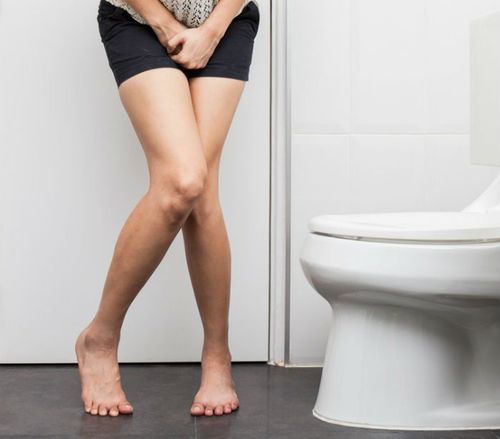This is an automatically translated article.
The article is professionally consulted by Specialist Doctor I Truong Nghia Binh - Specialist in Obstetrics - Obstetrics and Gynecology - Vinmec Da Nang International HospitalFemale urethral prolapse, also known as urethral prolapse, is a rare disease. The following article will provide you with all the information you need to know about urethral prolapse in women.
1. What is urethral prolapse?
Prolapse of the female urethral lining, also known as urethral prolapse, is a condition in which the urethral lining protrudes outside the vulva.Prolapse of the urethra is common in girls between 6 and 9 years old. The disease is divided into three levels: partial, total and complicated prolapse.
2. Causes of urethral prolapse
The cause of urethral prolapse has not been clearly established. The disease can be due to congenital defects or trauma:Congenital: Urethropathy abnormality, urethral wall muscle weakness, neuromuscular disorders, pelvic structures weakened, under impact of a number of other factors that increase the sudden pressure on the abdomen (long-term cough or long-term constipation) will protrude the urethral mucosa; Trauma: When the genital area is injured, it increases pressure on the abdomen, causing chronic constipation, or vaginal foreign bodies, vaginitis, ... causing the urethral mucosa to protrude.
3. Symptoms of female urethral prolapse
Because it comes from the urethra, when observed, there will be urine leaking from the prolapsed mass; The first symptom of the disease is bleeding where the mucosa is prolapsed due to rubbing, so the disease is easily confused with trauma or abuse; Urinary disturbances such as difficulty urinating, pain, urinary incontinence or urinary retention; Because it is a rare disease, female urethral prolapse is often misdiagnosed with some other diseases in the genital area. If the disease is not detected and treated, the prolapsed mucosa can become necrotic and cause narrowing of the urethra later, and the urethral mucosal prolapse is blocked.

4. Diagnosis of female urethral prolapse
In order to confirm the diagnosis of female urethral prolapse, in addition to the above-mentioned clinical symptoms, the specialist doctor can use the subclinical method, which is ultrasound, to find the associated malformations.In order to differentiate female urethral prolapse from other diseases, doctors treat it based on the following symptoms:
Blood in urine; Is the vulva injured or injured; There is a cyst next to the urinary opening; Ureteral cyst protruding outside the vulva; Have vaginal polyps.
5. Treatment of urethral prolapse
5.1 Principles of treatment of urethral prolapse The disease should be treated early to resolve the prolapsed urethral mucosal mass causing bleeding. In case of heavy bleeding, emergency surgery will be indicated.
5.2 Preoperative treatment of urethral prolapse Conduct complete blood count and urinalysis, bleeding time (TS), blood clotting (TC); While waiting for emergency surgery, the patient is asked to fast; As a precaution before or during surgery, the patient is prescribed antibiotics. 5.3 Surgical treatment of urethral prolapse The surgical principle is to cut the prolapsed urethral mucosal mass; This is a simple surgery that is performed while the patient is supine (obstetric position) and under general anesthesia; Urinary catheterization for patients with urethral prolapse; The surgeon uses a knife or electric knife to cut the prolapsed mucosa around the urinary catheter; The patient was stopped bleeding by electrocautery or sutured with target.

5.4 Postoperative treatment of urethral prolapse The patient was prescribed 3rd generation Cephalosporin antibiotics and analgesics; From 1 - 3 days after surgery, remove the patient's urinary catheter; Changing dressings and cleaning, taking care of incisions daily; The hospital stay is 1-3 days. Surgical approach is used to treat total urethral prolapse or complicated prolapse. Meanwhile, partial urethral prolapse can be treated medically with the application of oestrogen, but this method is not very effective and takes a long time.
Female urethral mucosal prolapse is a rare disease caused by congenital or traumatizing vulva and urethral areas. When seeing abnormalities in this area with the above-mentioned signs, patients should see a doctor soon for timely treatment and high treatment efficiency.
Please dial HOTLINE for more information or register for an appointment HERE. Download MyVinmec app to make appointments faster and to manage your bookings easily.














